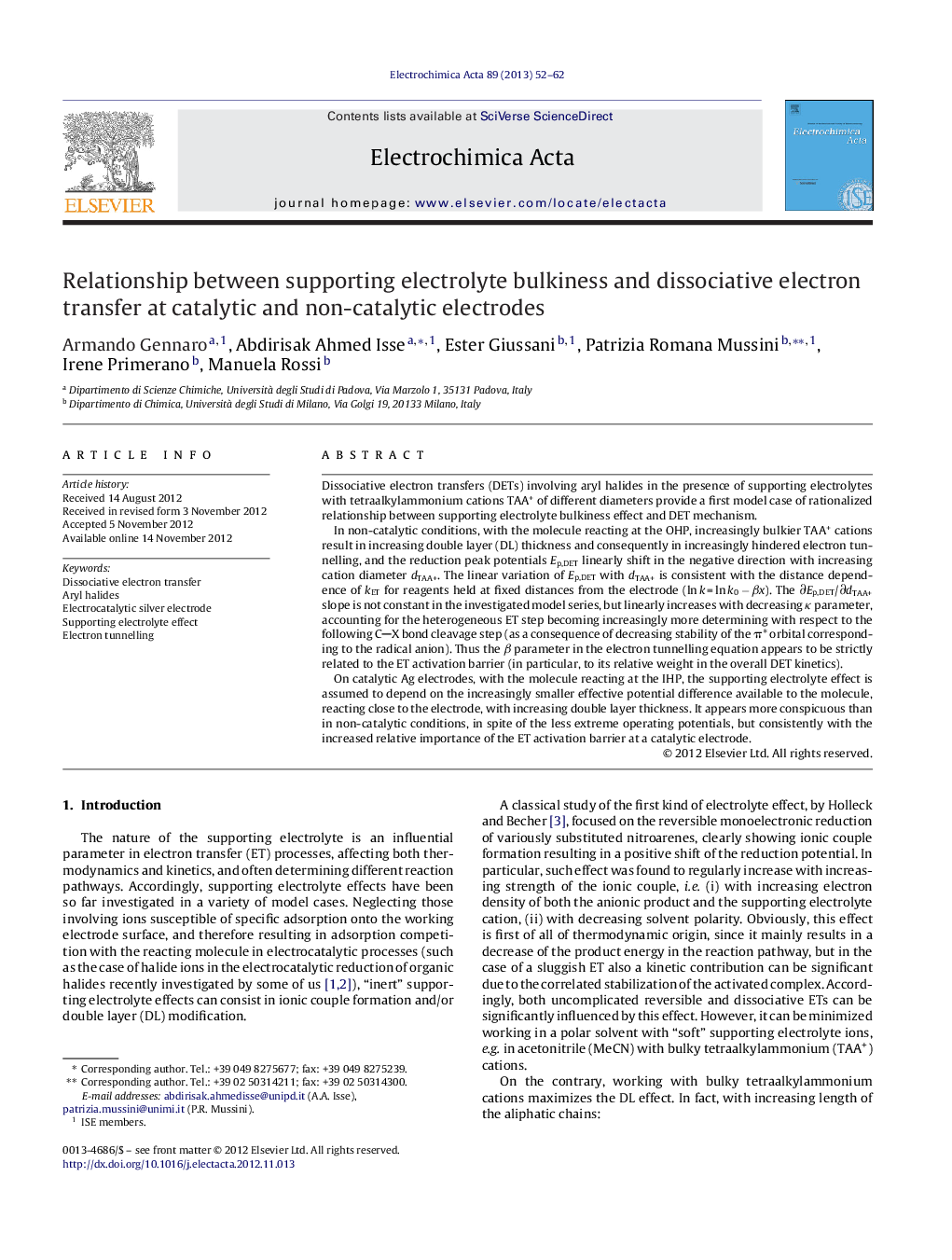| Article ID | Journal | Published Year | Pages | File Type |
|---|---|---|---|---|
| 187572 | Electrochimica Acta | 2013 | 11 Pages |
Dissociative electron transfers (DETs) involving aryl halides in the presence of supporting electrolytes with tetraalkylammonium cations TAA+ of different diameters provide a first model case of rationalized relationship between supporting electrolyte bulkiness effect and DET mechanism.In non-catalytic conditions, with the molecule reacting at the OHP, increasingly bulkier TAA+ cations result in increasing double layer (DL) thickness and consequently in increasingly hindered electron tunnelling, and the reduction peak potentials Ep,DET linearly shift in the negative direction with increasing cation diameter dTAA+. The linear variation of Ep,DET with dTAA+ is consistent with the distance dependence of kET for reagents held at fixed distances from the electrode (ln k = ln k0 − βx). The ∂Ep,DET/∂dTAA+ slope is not constant in the investigated model series, but linearly increases with decreasing κ parameter, accounting for the heterogeneous ET step becoming increasingly more determining with respect to the following CX bond cleavage step (as a consequence of decreasing stability of the π* orbital corresponding to the radical anion). Thus the β parameter in the electron tunnelling equation appears to be strictly related to the ET activation barrier (in particular, to its relative weight in the overall DET kinetics).On catalytic Ag electrodes, with the molecule reacting at the IHP, the supporting electrolyte effect is assumed to depend on the increasingly smaller effective potential difference available to the molecule, reacting close to the electrode, with increasing double layer thickness. It appears more conspicuous than in non-catalytic conditions, in spite of the less extreme operating potentials, but consistently with the increased relative importance of the ET activation barrier at a catalytic electrode.
